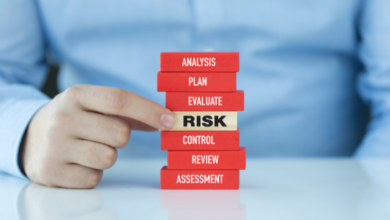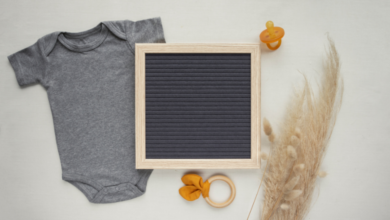Is it Safe to Snorkel While Pregnant? 8 Important Guidelines to Follow

Introduction
Pregnancy often leads to questions about which activities are safe to continue. For many, snorkeling—a popular water activity that allows individuals to observe underwater life—raises concerns about its safety during pregnancy. While snorkeling is generally considered a low-risk activity, there are several factors to consider to ensure both maternal and fetal well-being. This article explores the safety of snorkeling during pregnancy and provides eight essential tips to follow for a safe and enjoyable experience.
- Understanding the Risks of Snorkeling During Pregnancy
1.1 Physical Exertion and Cardiovascular Impact
- Heart Rate and Breathing: Snorkeling requires physical activity, which can elevate your heart rate and breathing. During pregnancy, it’s important to monitor these changes, as excessive exertion could potentially affect your cardiovascular health and that of your baby.
- Increased Oxygen Demand: The physical exertion of snorkeling might increase your oxygen needs. While most women manage this well, it’s important to be aware of any signs of breathlessness or discomfort.
1.2 Temperature Regulation
- Water Temperature: Both very cold and very hot water can affect your body temperature regulation. Prolonged exposure to extreme temperatures can lead to discomfort or dehydration, potentially impacting your pregnancy.
- Avoiding Overheating: Ensure you avoid overheating by limiting time spent in warm water and staying hydrated.
1.3 Risk of Injury
- Accidents and Falls: The risk of accidental injuries, such as slips or cuts, is present when snorkeling. Be cautious of sharp objects and uneven surfaces that could cause harm.
- Fatigue and Dizziness: Pregnancy can lead to increased fatigue and dizziness. Pay attention to these symptoms and avoid snorkeling if you feel unwell or overly tired.
- Consulting with Your Healthcare Provider
2.1 Personalized Medical Advice
- Health Assessment: Before starting any new activity, including snorkeling, consult with your healthcare provider. They can assess your overall health and pregnancy status to determine if snorkeling is a safe option for you.
- Individual Considerations: Your healthcare provider will consider any pregnancy complications or conditions that might affect your ability to safely participate in snorkeling.
2.2 Discussing Activity Limitations
- Specific Recommendations: Your provider may offer specific guidelines on how long you can snorkel, how often, and any precautions you should take based on your health and pregnancy progress.
- Safety Precautions: Ensure you follow any personalized advice given by your healthcare provider to minimize risks.
- Preparing for a Safe Snorkeling Experience
3.1 Choosing the Right Location
- Safe Environments: Opt for snorkeling locations that are known for their safety and have minimal hazards. Avoid areas with strong currents, sharp rocks, or excessive marine life that could pose a risk.
- Accessible Entry and Exit Points: Choose locations with easy and safe access to the water to minimize the risk of falls and injuries.
3.2 Ensuring Proper Equipment
- Fit and Comfort: Ensure that your snorkeling gear, including the mask, snorkel, and fins, fits properly and is comfortable. Ill-fitting equipment can cause discomfort or even injury.
- Hygiene: Use well-maintained and clean equipment to avoid potential infections or irritations.
- Monitoring Your Physical Condition
4.1 Listening to Your Body
- Signs of Discomfort: Pay attention to how your body responds to snorkeling. If you experience any discomfort, shortness of breath, or dizziness, stop immediately and exit the water.
- Hydration and Rest: Stay hydrated and take breaks as needed. Avoid snorkeling if you feel excessively tired or unwell.
4.2 Managing Fatigue and Dizziness
- Frequent Breaks: Take regular breaks to rest and avoid overexertion. This is particularly important as pregnancy can lead to increased fatigue and dizziness.
- Avoiding Deep Water: Consider staying in shallower waters where you can easily touch the ground or have quick access to safety if needed.
- Considering Environmental and Safety Factors
5.1 Weather Conditions
- Check the Forecast: Ensure that weather conditions are suitable for snorkeling. Avoid snorkeling in adverse weather conditions such as storms, high winds, or rough seas.
- Sun Protection: Use sunscreen to protect your skin from sunburn, and wear a hat or other protective gear if necessary.
5.2 Marine Life and Hazards
- Avoiding Dangerous Species: Be aware of and avoid any potentially dangerous marine life. Research the area to know what types of marine species you might encounter.
- Staying Alert: Maintain a safe distance from marine creatures and avoid touching or disturbing them.
- Tips for a Safe and Enjoyable Snorkeling Experience
6.1 Start Slowly
- Gradual Introduction: If you’re new to snorkeling or have not snorkeled during pregnancy, start with shorter and less strenuous sessions. Gradually increase the duration as you become more comfortable.
- Accompanied Snorkeling: Consider snorkeling with a partner or guide who can assist if needed and ensure your safety.
6.2 Use Proper Technique
- Breathing Technique: Practice controlled and steady breathing while snorkeling to avoid hyperventilation and ensure a comfortable experience.
- Efficient Movement: Use slow and deliberate movements to conserve energy and reduce the risk of fatigue or strain.
- Alternative Activities
7.1 Exploring Other Water Activities
- Less Strenuous Options: If snorkeling seems too challenging, consider other water activities such as swimming in a pool or gentle water aerobics, which may be safer and more comfortable.
- Non-Water Activities: Engage in other forms of exercise that are safe during pregnancy, such as walking or prenatal yoga.
7.2 Consulting with a Specialist
- Pregnancy Fitness Expert: Seek advice from a fitness expert who specializes in pregnancy to find suitable activities that support your health and well-being.
- Final Considerations
8.1 Pregnancy Progress
- Third Trimester: As you progress into the third trimester, you may need to re-evaluate the safety of snorkeling based on changes in your body and comfort levels.
- Healthcare Provider Reassessment: Regularly consult with your healthcare provider to ensure that snorkeling remains a safe activity throughout your pregnancy.
8.2 Enjoying Your Experience
- Relaxation and Enjoyment: Snorkeling can be a relaxing and enjoyable experience if done safely. Focus on enjoying the underwater world and maintaining a positive and mindful approach to the activity.
Conclusion
Snorkeling during pregnancy can be a safe and enjoyable activity if appropriate precautions are taken. By understanding the potential risks, consulting with your healthcare provider, and following safety tips, you can ensure a positive snorkeling experience. Remember to listen to your body, choose safe environments, and prioritize your health and comfort throughout the activity. If snorkeling is not suitable for you, consider alternative activities that align with your pregnancy needs and preferences. With careful planning and mindfulness, you can make the most of your water adventures during pregnancy.
Brief
Snorkeling during pregnancy can be safe if proper precautions are followed. Key considerations include monitoring physical exertion, managing temperature, and avoiding risks of injury. Consult with your healthcare provider for personalized advice, choose safe locations, and use well-fitting equipment. Listen to your body, stay hydrated, and consider alternative activities if necessary. With careful planning and adherence to safety tips, snorkeling can be an enjoyable experience during pregnancy.




